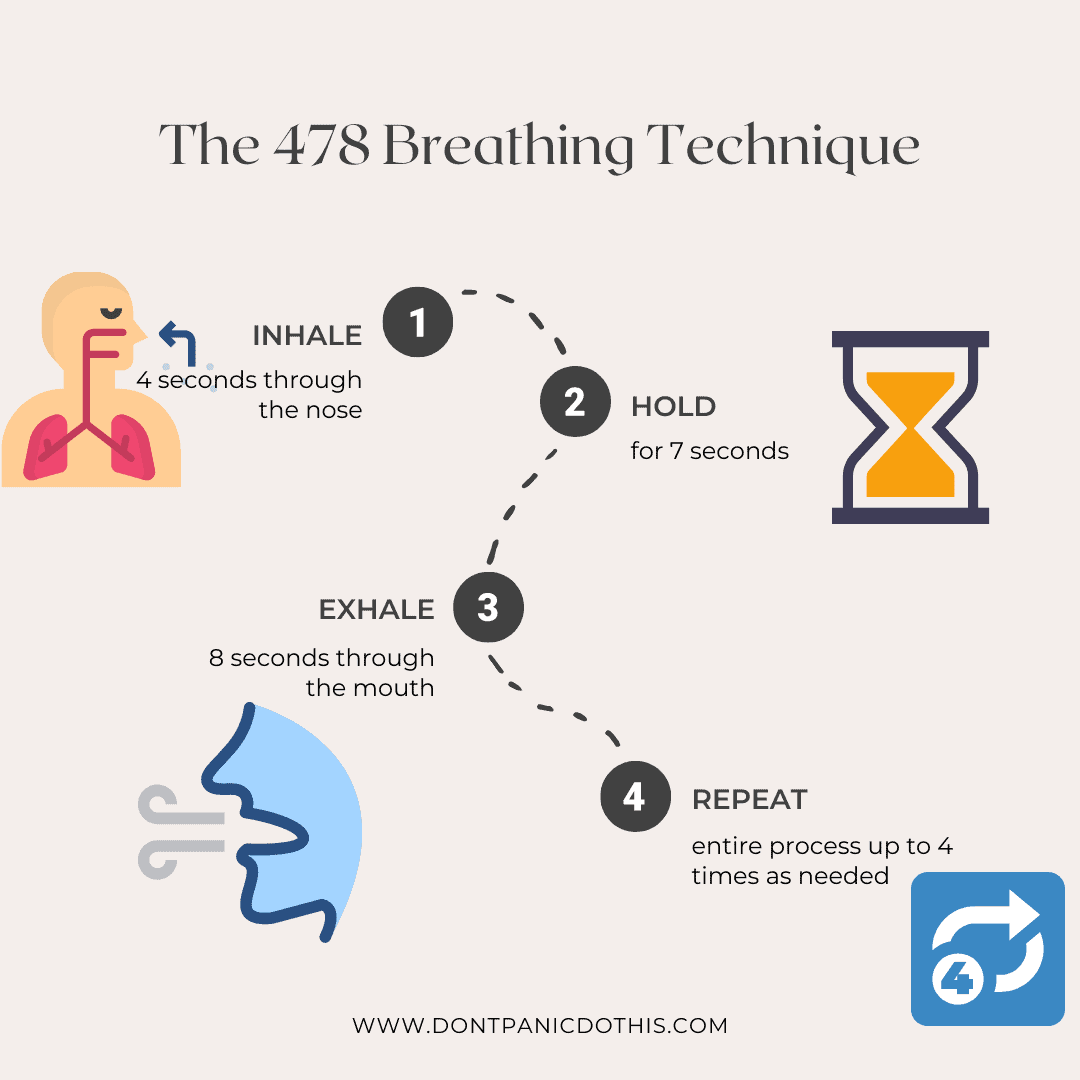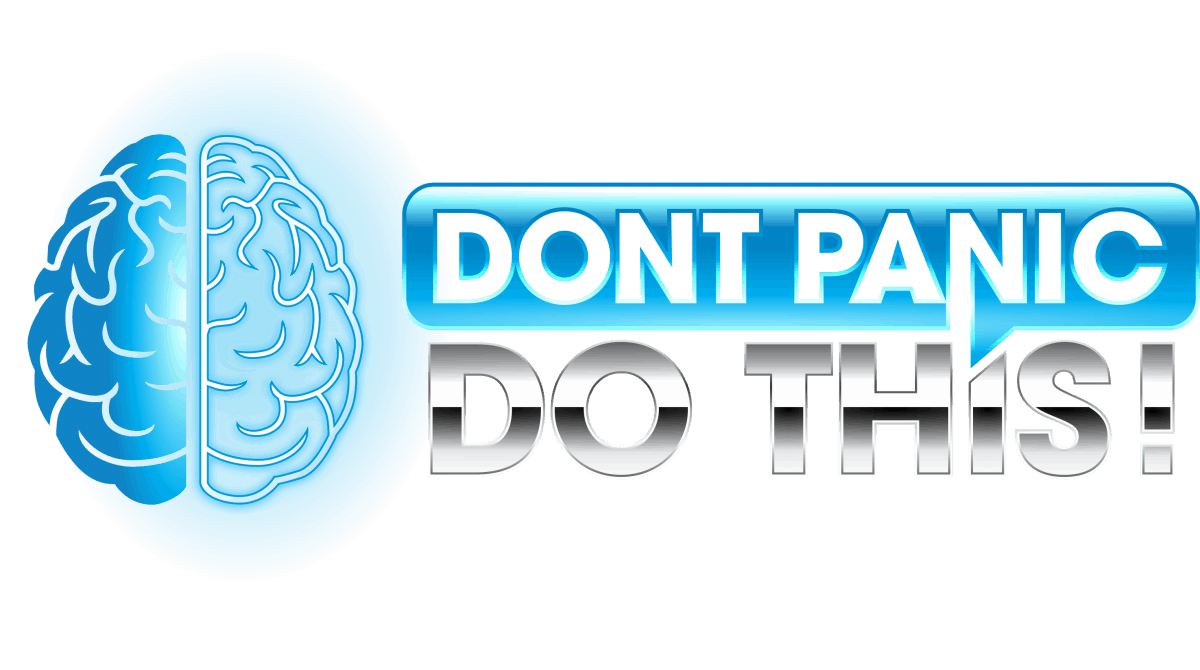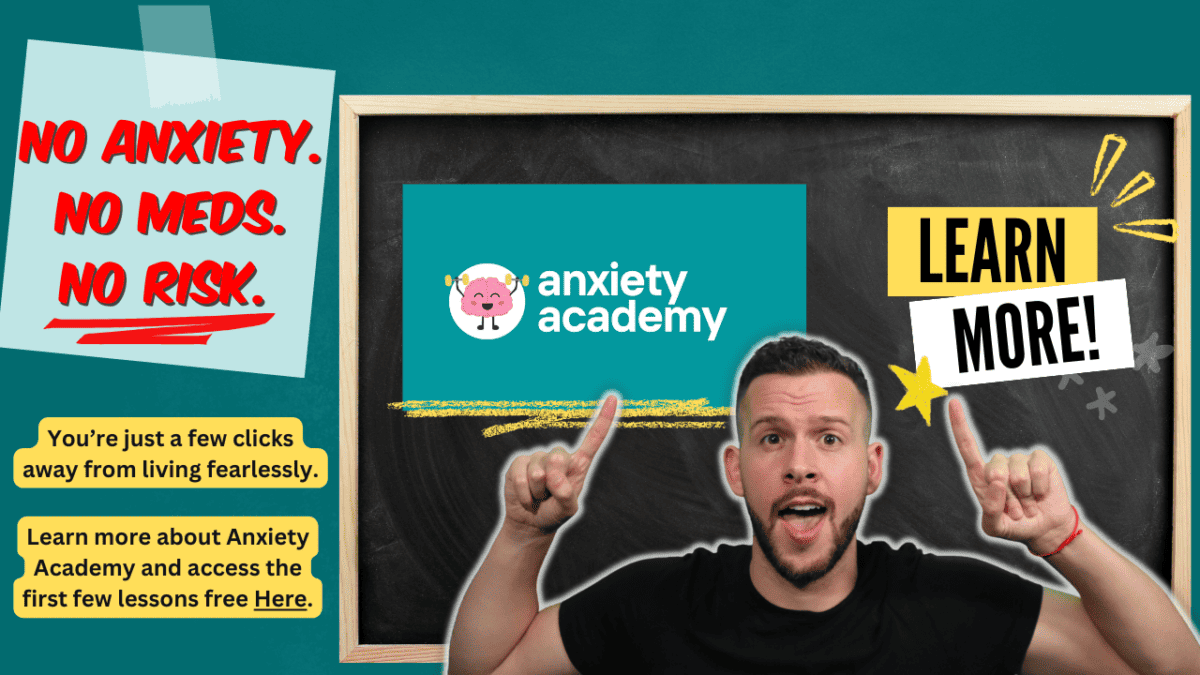Practicing 4-7-8 breathing for anxiety relief is a great way to stop hyperventilation fast. When we start to feel panicky or anxious, our thoughts quickly spiral out of control and breathing feels difficult. Implementing this technique can quickly stop those stressful feelings.
So, what is the 4-7-8 breathing technique?
The 4-7-8 breathing technique is one of the best breathwork methods for stopping anxiety. While there are other methods for anxiety that can work, this is one of the most effective. This breathing trick involves inhaling for 4 seconds, holding for 7, and exhaling for 8.
Keep reading and I'll show you how to use this technique yourself, plus share some tips on how to stop panic attacks quickly!
4-7-8 Breathing for Anxiety
How to do the 478 Breathing Method?
The 478 breathing method is simple. Here’s how to do it:
- Inhale for 4 seconds through your nose
- Hold the breath for 7 seconds
- Exhale for 8 seconds through your mouth
- Repeat the process up to 4 times per session

Pretty simple stuff.
Although there are a few tips worth mentioning:
- Check with your doctor before trying any new breathing method. It’s important to make sure that any irregular breathing is due to anxiety or panic attacks; rather than a medical condition like asthma.
- Try it from a seated position with your back straight at first. Changing up your breathing pattern can make some people feel dizzy or lightheaded, but this will pass.
- Keep your tongue placed on the roof of your mouth behind your front teeth if possible; throughout the entire exercise.
- You should practice this method at least twice per day. The more often you perform this exercise, the more effective it may become over time.
- Don’t perform more than 4 repetitions per set for the first month. Afterwards, you may increase repetitions up to 8 as you feel more comfortable doing so.
- If this exercise feels difficult, you may cut the time in half; as long as you keep the ratio. This would be a 2 second inhale, a 3.5 second hold, and a 4 second exhale.
How Does The 478 Breathing Technique Work?
The 478 breathing technique is a breathwork exercise that can work on several levels:
- Manual Override
- Slowed Breathing
- Diaphragmatic Breathing
- Mentally Grounding

Let’s take a closer look at each of these benefits of 478 breathing in greater detail.
Manual Override
With any breathing technique for anxiety, the goal is to normalize breathing and stop hyperventilation. Establishing a regular breathing pattern is the first step.
Basically, any breathing exercise is an attempt to manually override our irregular breathing.
During a panic attack, we can become uncomfortably aware of our rate of breathing. This can cause us to breathe harder and faster than we usually would (aka hyperventilation). Hyperventilation worsens anxiety and creates a vicious anxiety cycle.
The 478 breathing technique works by allowing us to manually grab the controls. It’s a conscious reminder that, no matter how anxious, we are still in control.
Just as the body takes cues from the brain, the brain also takes cues from the body. Signal to your brain that it’s time to relax by utilizing this incredible “manual override.”
Slowed Breathing
We’ve already talked a bit about hyperventilation, so you know that rapid breathing worsens anxiety. Now let’s talk a bit about what happens when we do the exact opposite.
One major benefit of 478 breathing is that it forces us to slow our breathing. You’ve probably noticed that the exhale is twice as long as the inhale: That’s no coincidence!
Longer exhales activate the parasympathetic nervous system. This is the part of our nervous system responsible for helping us to relax, especially after a panic attack or anxiety. [1]
By actively slowing our breathing for a bit, we force our body and mind to relax. We make it easier for our parasympathetic nervous system to tell the brain, “everything’s going to be okay.”
Diaphragmatic Breathing
For maximum benefits while performing 478 breathing, you should also utilize diaphragmatic breathing. Diaphragmatic breathing is just another word for “belly breathing,” and it’s easier than it sounds.
Basically, you actively engage the diaphragm (large muscle below the lungs) while breathing. This helps you to pull more air in and get the most of each breath.
To make sure you’re doing this right, put one hand on your chest and one on your stomach. During each breath, you should feel your stomach rising and falling, rather than your chest.
This may take a few tries to get right. Experiment a bit with activating your stomach and abdominal muscles until it works.
By engaging our diaphragm through belly breathing, we can gain additional relaxation benefits. Studies show that diaphragmatic breathing could improve sustained attention, affect, and cortisol levels. It could reduce subjective and physiological consequences of stress in healthy adults. [2]
Mentally Grounding
With absolutely any panic attack or severe anxiety attack, it’s important to regain control of one’s thoughts. Just like our breathing, our thoughts can also spiral out of our control.
There are many ways to stop a panic attack or anxiety. Oftentimes, one of the most important steps is to find something mentally grounding; in other words, a distraction.
In addition to all of the other benefits, the 478 breathing method is also a fantastic mental distraction. During a panic attack, we often focus on all the wrong things. Re-centering our thoughts by focusing on a number count (4-7-8) is a great way to escape this cycle.
Alternative Breathing Methods for Anxiety
There are many alternative breathing methods for anxiety.
If you understand breathwork but still have a hard time using it effectively, consider using a breathwork assisting device. The handheld CalmiGo is a fantastic option for help with practicing breathwork and calming down while anxious.
Don't need a device and just hungry to learn more breathwork techniques?
My new book, Don't Panic, Do This! 100+ Ways to Stop Panic Attacks and Anxiety includes many different breathing techniques; whether you're a beginner, intermediate, or advanced, there will be something new and exciting in there for you!
Sources
[1] National Library of Medicine - The physiological effects of slow breathing in the healthy human



